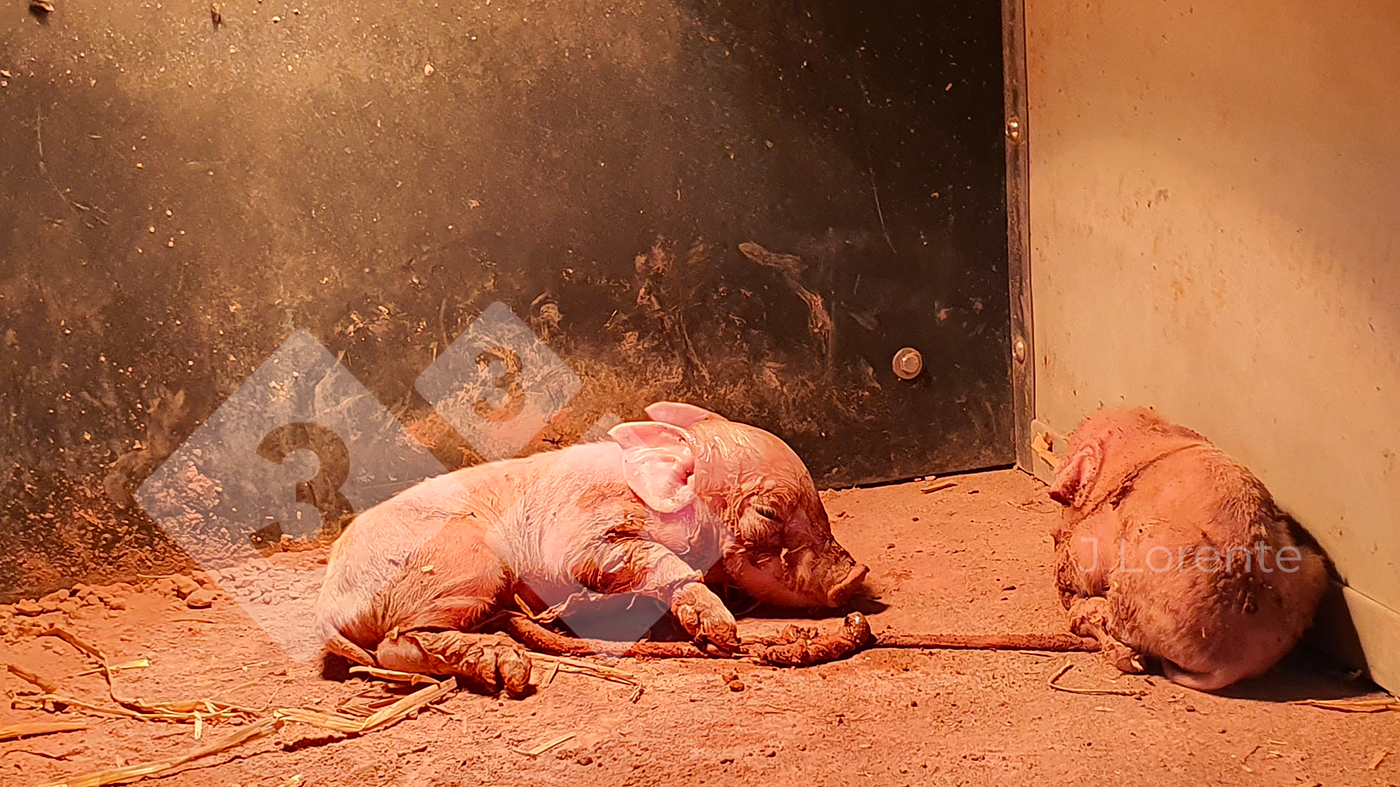Video about split suckling: The importance of the first few hours
24-Dec-2024 (ago 11 months 29 days)
Today, it has been fully demonstrated how important it is for piglets to get colostrum:
- from their own mother
- within the first hours after farrowing
Here are two good articles that tell us about the importance of colostrum, its composition, and the minimum amount to be ingested: 178 grams of colostrum per kilogram of live weight.
- A simple tool to increase the amount of colostrum available to newborn piglets
- Key questions of colostrum management
With the current average colostrum production being 3.6 to 4 kg per sow, if we want to ensure there is enough colostrum per piglet and help the smaller piglets get it, there is only one thing we can do, and that is to work with split suckling.
Split suckling is summarized as separating one part of the litter and enclosing it with a heat source for a period of time while the other piglets are able to intake colostrum.
The question is "How do I do it?" In the following video and in this article we will explain two different scenarios and how to do split suckling in each of them.
1. We get to the farm and the sow has finished farrowing
The first thing we have to do when we enter the farrowing barn- if we don't have to feed- is to check on the sows that are farrowing and those that have farrowed during the night so that we can quickly attend to the piglets.
If the sow has finished farrowing, we should observe whether the piglets are still wet and "wandering" around the farrowing pen or, on the contrary, if they are all dry and already suckling. This will give us an idea of whether the sow finished farrowing recently or a few hours ago.
If a piglet's body temperature has dropped too low, it will have a very difficult time getting enough colostrum.
In order for piglets to be able to get enough colostrum, their body temperature must be adequate.
- Piglets are already dry and suckling: In this case, it is normal with a large litter for the smallest piglets to have difficulty accessing the sow, so, in order to facilitate and ensure that they get enough colostrum:
- We separate out the largest piglets into an enclosed box or nest with a heat source.
- We write down the time we do so.
- If there is a smaller piglet wandering around, we place it close to the sow's teats.
- After an hour or an hour and a half we can go back and let the rest of the piglets out so they can go back to suckling.
- Piglets are still wet: In this case, we usually see uncoordinated piglets that are not able to get close enough to suckle, therefore:
- We take the smallest, wettest piglets and enclose them inside the box or nest, always with a heat source.
- We write down the time we do so.
- We leave the others suckling and, an hour later, when the small ones are dry, we trade them out for the ones we had left out. This way, they will be able to get close and suckle much more easily.
- We write down the time again and between one hour and an hour and a half later we can release them and leave the whole litter together.
2. We are at the farm when the sow is farrowing: Monitoring farrowing
In another article, we will review monitoring of farrowing and other piglet management in depth, but in this article, we will focus on split suckling, but to do this we absolutely must keep track of the farrowing process with the help of a card or paper.
Remember that the most important thing during the first hours is that the piglet INTAKES COLOSTRUM as soon as possible, so any other procedure that would make this difficult should be left for another time.
At least every 40 minutes we will walk by the sow or sows that are farrowing and:
- Write down how many new piglets she has, both born alive and stillborns and we also write down if we had to assist in farrowing.
- We take the newborn, wet piglets and immediately put them in a box or in the nest enclosed with a heat source and drying powder (we can also dry them previously). Ideally, when putting them in, we should mark them on the back with a marking stick.

- Forty minutes later we go back and remove the piglets that are already dry from the nest. If any more piglets have been born, we place them into the box or nest as well, write it down, and mark them.
- We should not leave the piglets confined for more than 90 minutes as we also need them to be able to intake colostrum as soon as possible.
NOTE: If the newborn piglet is a little wet, but is large and suckling properly, we can dry it a little and let it intake colostrum directly.
- Once the last piglet has been born and has already spent at least 40 minutes inside the box or nest with the heat source, we will let all the marked piglets out, placing them on the teats, and for at least 1 hour we will enclose the large piglets that have already been able to get colostrum without problems during the farrowing process. This way we ensure that the smaller piglets reach a teat to receive colostrum.

- We must write down all the processes in order to know the exact time each one of them was done.
